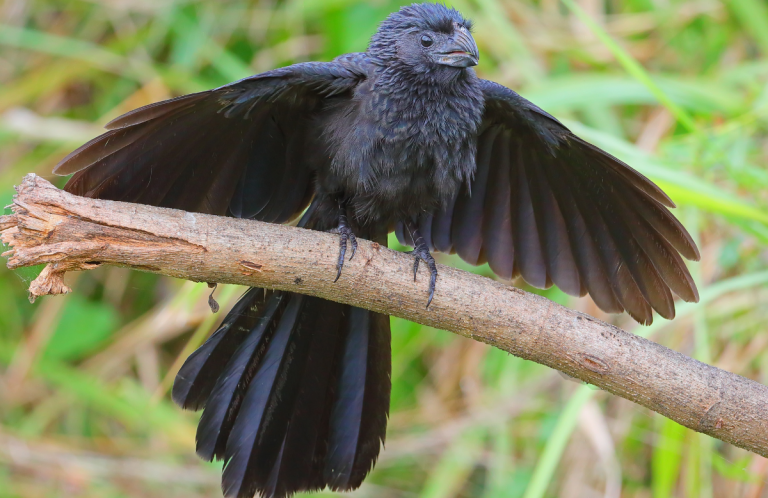 Swallow-tailed Hummingbird is one of the largest of its family, measuring up to 6½ inches long. Like the Long-tailed Sylph and Marvelous Spatuletail, the bird's distinctive, colorful tail makes up nearly half its length.
Swallow-tailed Hummingbird is one of the largest of its family, measuring up to 6½ inches long. Like the Long-tailed Sylph and Marvelous Spatuletail, the bird's distinctive, colorful tail makes up nearly half its length.
With five recognized subspecies, the Swallow-tailed Hummingbird is widely distributed in eastern South America, including in several reserves—such as Serra do Urubu—supported by ABC in Brazil. Although non-migratory, some populations move north or south a short distance in the dry winter months.
These lovely birds suffered heavy trapping for the cage bird trade in the past—an activity prohibited by Brazilian law and, as of a few years ago, international treaty.
Habitat of the Swallow-tailed Hummingbird
The majority of the Swallow-tailed Hummingbird's range is in the dry, semi-open caatinga and cerrado habitats of Brazil. The bird avoids moist habitat such as rainforest, although it can sometimes be found at forest edges.
“The forked tail and assertive, direct flight through open grassland makes this species easy to identify,” said Bennett Hennessey, who heads up the Brazil Conservation Program at ABC. “Everywhere I have seen it, from Bolivia to Brazil, it seems to do well in open areas and is usually the most abundant of the hummingbirds in the region.”
Swinging Swallowtails
Like other hummingbird species, including Antillean Mango and Ruby-Topaz, Swallow-tailed Hummingbirds are solitary in all aspects of life other than breeding; the male's only involvement in the process is the actual mating with the female. There is no pair bond for this species, and males and females may mate with several different partners over the course of a breeding season.
During courtship, the male performs a graceful display, first hovering in front of a perched female, then chasing her through the air. The two may perform a “zig-zag flight” together, often at dusk.
Sign up for ABC's eNews to learn how you can help protect birds
Defending the Nest
After mating, the female Swallow-tailed Hummingbird builds a cup-shaped nest lined with soft plant fibers and covered with lichen and mosses, held together by sticky spider webs. She builds the nest on a horizontal twig about 10 to 15 feet above the ground.
Each clutch consists of two eggs, which the female broods and cares for herself. In typical hummingbird fashion, she aggressively defends her nest and young and will dive-bomb birds twice her size to protect them. The female may raise two broods in a season, sometimes reusing the same nest.
Fierce Flower Feeders
Swallow-tailed Hummingbird is a common species at hummingbird feeders, bird baths, and water fountains. Because of their larger size, Swallow-tailed Hummingbirds dominate smaller hummingbird species at nectar sources.

Swallow-tailed Hummingbird by Wilfred Marissen, Shutterstock
The birds feed on flower nectar from a variety of native and introduced plants, as well as small insects that they “hawk” in mid-air. Males establish and fiercely defend feeding territories, chasing away virtually every intruder—from birds to large insects such as bumblebees and hawk moths—that attempt to feed there. (Females also join in the defense of prime nectar sources.)
A Widespread Wonder
Swallow-tailed Hummingbirds can be found in several areas where ABC works with Brazilian partners. The species occurs at Serra do Urubu, where it is one of the more common birds at feeders in the reserve's developing hummingbird gardens. This reserve is managed by SAVE Brasil and supported by ABC.
Swallow-tailed Hummingbirds also benefit from protection of the Mata do Passarinho Reserve, established by Biodiversitas to provide habitat for the Critically Endangered Stresemann's Bristlefront. Another ABC partner, AQUASIS, is working in the Baturité Mountains of Brazil's northeastern state of Ceará, an area that is home to this hummingbird as well as rare species such as the Ceará Gnateater and Grey-breasted Parakeet.
Donate to help conserve habitat for this Brazilian bird!



















































